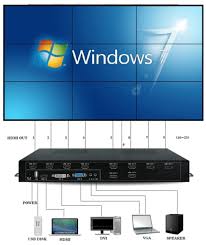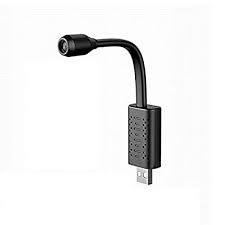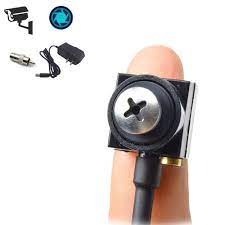Video walls have become a popular and effective way to display dynamic content in various settings, from control rooms and conference halls to retail spaces and entertainment venues. These large displays consist of multiple screens tiled together to create a single, cohesive image or video. To manage and control the content displayed on these video walls, specialized video wall control systems are essential.
A video wall control system serves as the central hub for managing the content, layout, and configuration of the video wall display. It allows users to easily switch between different sources, resize and rearrange content on the screens, create preset layouts for specific scenarios, and schedule content playback.
One of the key features of a video wall control system is its ability to support various input sources, such as live camera feeds, computer screens, media players, and external devices. This versatility enables users to display a wide range of content types, including videos, images, data visualizations, and real-time information.
Moreover, advanced video wall control systems offer intuitive user interfaces that simplify the process of managing complex video wall configurations. Users can drag and drop content onto different screens, adjust aspect ratios and resolutions, add text overlays or graphics, and apply visual effects for enhanced presentation quality.
Another important aspect of video wall control is its ability to enable collaboration among multiple users. In environments like command centers or collaborative workspaces, team members can access the control system remotely to contribute content or make real-time changes to the display layout.
In addition to content management features, video wall control systems often include monitoring and diagnostic tools that allow users to check the status of individual screens, identify potential issues or failures, and troubleshoot problems quickly. This proactive approach helps ensure uninterrupted operation of the video wall display.
Overall, a well-designed video wall control system plays a crucial role in maximizing the impact and functionality of modern video walls. By providing flexible content management options, user-friendly interfaces, collaborative capabilities, and monitoring tools, these systems empower users to create engaging visual experiences tailored to their specific needs and objectives.
Understanding Video Wall Control Systems: Key Features, Functionality, and User Collaboration
- What is a video wall control system?
- How does a video wall control system work?
- What are the key features of a video wall control system?
- What input sources can be supported by a video wall control system?
- How can content be managed and displayed on a video wall using a control system?
- Is it possible to customize the layout and configuration of a video wall with a control system?
- Can multiple users collaborate on managing a video wall through the control system?
- Are there monitoring and diagnostic tools available in video wall control systems?
What is a video wall control system?
A video wall control system is a centralized solution designed to manage and orchestrate the content displayed on a video wall comprised of multiple screens. It serves as the brain behind the operation, allowing users to seamlessly control various aspects of the video wall, such as content selection, layout configuration, source switching, and scheduling. By providing a user-friendly interface and advanced functionalities, a video wall control system empowers users to create captivating visual displays tailored to their specific needs and requirements. This essential tool enables efficient collaboration, content customization, real-time adjustments, and proactive monitoring to ensure a seamless viewing experience across all screens within the video wall setup.
How does a video wall control system work?
A video wall control system functions as the central command center for managing the content and configuration of a video wall display. It works by integrating multiple input sources, such as live camera feeds, computer screens, media players, and external devices, to create a unified and dynamic visual presentation. Users can easily switch between different sources, resize and rearrange content on the screens, create preset layouts for specific scenarios, and schedule content playback through the intuitive user interface of the control system. Additionally, advanced features allow for collaborative usage, remote access for team members, real-time changes to display layouts, and monitoring tools to ensure seamless operation of the video wall. In essence, a video wall control system streamlines the process of controlling and customizing content on a video wall to deliver impactful visual experiences across various settings.
What are the key features of a video wall control system?
A video wall control system offers a range of key features that are essential for managing and optimizing the performance of a video wall display. Some of the key features include support for multiple input sources, allowing users to display various types of content such as videos, images, and data feeds. The system also enables users to create and customize layouts, resize and rearrange content on the screens, and schedule playback according to specific requirements. Additionally, advanced video wall control systems provide intuitive user interfaces for easy operation, collaborative capabilities for team members to contribute remotely, and monitoring tools for proactive maintenance and troubleshooting. These features collectively enhance the functionality and effectiveness of a video wall display in diverse settings.
What input sources can be supported by a video wall control system?
A video wall control system is designed to support a diverse range of input sources to cater to various content requirements and applications. Common input sources that can be seamlessly integrated with a video wall control system include live camera feeds, computer screens, media players, external devices such as laptops or smartphones, and content streaming platforms. This versatility enables users to display a wide array of content types, including videos, images, data visualizations, real-time information feeds, presentations, and more. The ability to easily switch between different input sources and formats ensures flexibility in content creation and enhances the overall visual impact of the video wall display.
How can content be managed and displayed on a video wall using a control system?
To manage and display content on a video wall using a control system, users can leverage the intuitive interface and functionality of the system. Content can be managed by selecting various input sources, such as live camera feeds, computer screens, media players, and external devices, and easily switching between them to display different content types. The control system allows users to resize, rearrange, and customize the layout of the content on the video wall screens according to their preferences. Additionally, preset layouts can be created for specific scenarios or events, making it convenient to switch between different configurations. With scheduling capabilities, users can plan ahead and automate content playback at specific times. Overall, a video wall control system simplifies the process of managing and displaying content on a video wall, offering flexibility and control for creating impactful visual presentations.
Is it possible to customize the layout and configuration of a video wall with a control system?
Yes, it is indeed possible to customize the layout and configuration of a video wall using a control system. A video wall control system offers users the flexibility to create and modify layouts according to their specific requirements. With features such as drag-and-drop functionality, resizing options, and preset templates, users can easily arrange and configure the content displayed on the video wall screens. This customization capability allows for dynamic presentations, efficient information sharing, and tailored visual experiences in various settings, ranging from command centers and boardrooms to retail stores and entertainment venues.
Can multiple users collaborate on managing a video wall through the control system?
Yes, multiple users can collaborate on managing a video wall through the control system. Advanced video wall control systems offer features that enable seamless collaboration among users in environments such as command centers, control rooms, and collaborative workspaces. With remote access capabilities, team members can log in to the control system from different locations to contribute content, make real-time adjustments to the display layout, and coordinate efforts effectively. This collaborative approach not only enhances productivity and efficiency but also allows for dynamic content management and improved decision-making processes across diverse applications of video wall technology.
Are there monitoring and diagnostic tools available in video wall control systems?
Monitoring and diagnostic tools are essential components of video wall control systems, offering users valuable insights into the status and performance of the display setup. These tools enable users to monitor the health of individual screens, identify potential issues or failures, and troubleshoot problems efficiently. By providing real-time information on screen connectivity, brightness levels, resolution settings, and other parameters, monitoring and diagnostic tools help ensure the smooth operation of the video wall system. This proactive approach not only minimizes downtime but also enhances the overall user experience by maintaining optimal display quality and reliability.




